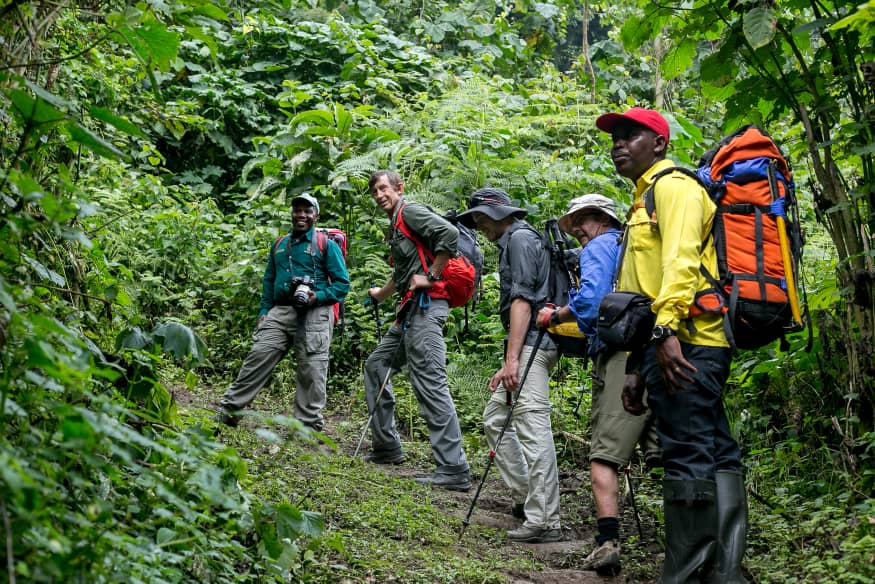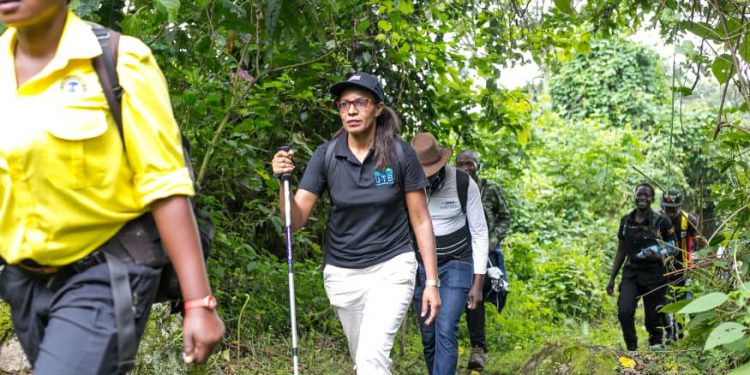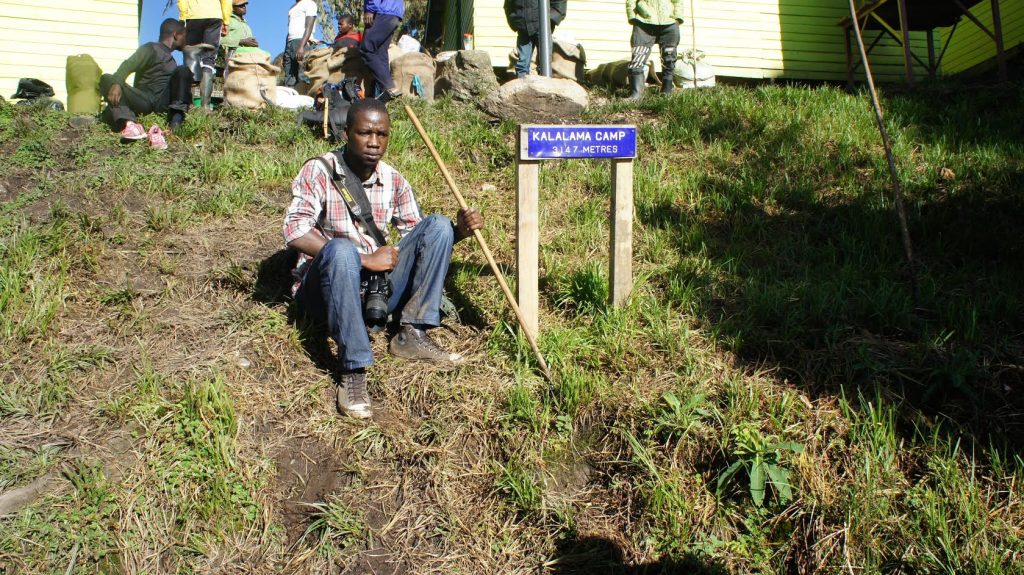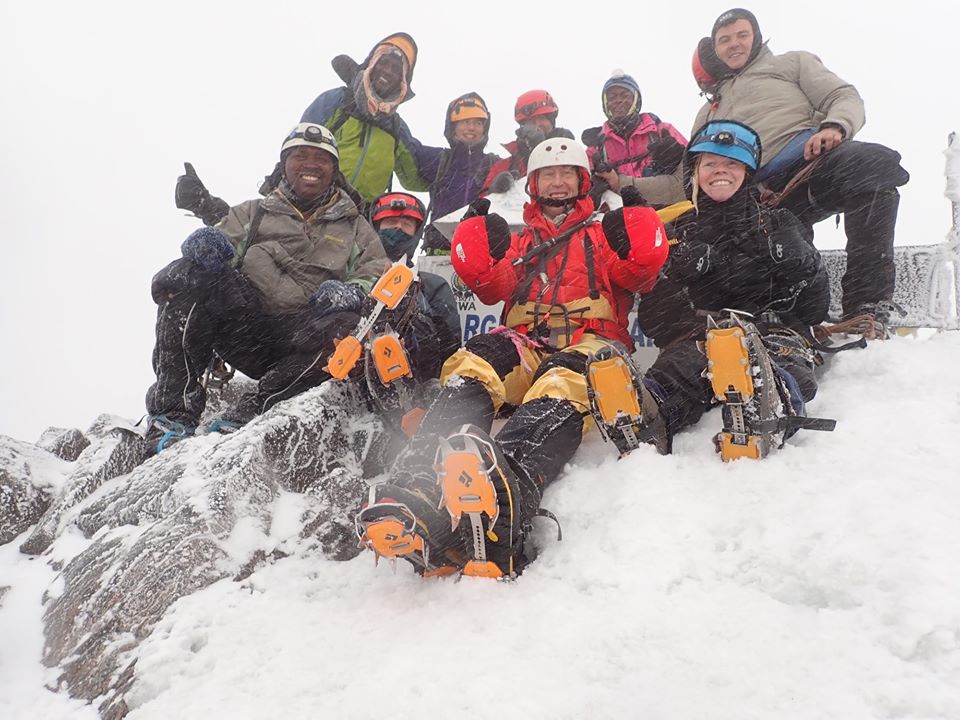
Following the footsteps of the man who conquered Mt. Everest to the Rwenzoris
Baca Juga

“The richness of Rwenzori in terms of flora and fauna! The smooth and enjoyable excursion! The welcoming and helpful people are some of the things that make hiking of the Rwenzoris a worthwhile experience,” were the first words said by Tim Macartney-Snape, a professional mountaineer and author from Australia as he concluded his trip to Uganda recently.
In 1984, Macartney together with Greg Mortimer were the first Australians to reach the summit of Mount Everest.
For many years, I had longed to scale Rwenzori Mountains to their highest point, Margherita peak, which is also the third-highest in Africa.
As they say chance comes, once, mine came in December when the Uganda Tourism Board Chief Executive Officer, madam(as we commonly refer to her) Lilly Ajarova invited members of the Conservation Media Camp(CMC) to which I belong to be part of the trip to the Rwenzoris alongside Tim Macartney-Snape.

The request to part of the journey was an offer to good to reject, not because of anything else but to fulfill an activity on my bucket list, but above all following into the footsteps of the man who had conquered the highest mountain in the world.
Before the d-day, we were presented with two options of either hiking the mountain for eight days to Margherita or do only one day up to the first camp at Sine Hunt camp which is about 2500 metres above sea level.

Almost the entire group, myself inclusive chose the former for we would rather die trying that be branded cowards.
“I will go for the eight-day hike. If I die I die,” most members said.
The journey begins
The journey that began on a high note in Kampala saw us have a halt at the Equator in Kayabwe before we had another stopover at the Biharwe eclipse monument located on Biharwe hills near the Igongo cultural centre in Mbarara where Macartney-Snape and Ajarova planted trees in memory of the trip.
We would finally arrive at our destination at the Rwenzori Trekking Services (RTS) offices in Kasese where we were to sleep, 10 hours later, and we were all knackered.
Usually, the journey from Kampala to Kasese that took us 10 hours takes less than 8 hours.

Here we were warmly welcomed but we were too exhausted to even respond to the welcomes that the only thing we asked for was supper, bathrooms and beds to sleep.
The food had already been prepared since they were expecting us. We ate bathed and went straight to bed to prepare for the next day.
The D-day
As early as 7 am, we were up and ready for the hardest part of the journey to the “top” of the Rwenzori Mountains and everyone was eager to conquer the third highest mountain peak in Africa.
After a heavy breakfast, we were led through brief of the dos and don’ts by a team led by Rwenzori Trekking Services boss, John Hunwick, UWA senior warden, James Okware and chief guide, Joshua Bwambale.
At around 10 am, we were ready to roll but we were warned that everyone had to move at their own pace to avoid getting tired easily.

The journey saw us move across bridges, hills and flatlands during our 8-hour journey that was always interrupted by stopovers to refresh but also have something to eat.
At around 6 pm, the 8 hour journey saw us arrive at Sine Hunt camp, 2500 metres above sea level where we were to spend the next night.
By the time we arrived at the point, Tim Macartney-Snape’s group had long gone and we could not by any chance catch them again.
Following my arrival at the camp, I was advised the best way to refresh was taking a bath at one of the falls which were about 70 meters away from our sleeping place.
A colleague asked me to fetch them some water and I had to move with a bottle.
I get struck
When I went to the falls, what I didn’t expect befell me as I attempted to touch water that had collected in a pool from the falls.
It was as cold as ice that I took me over five minutes to heal from the coldness as I sat near the pool.
Finally, I was able to place my feet in the pool before later bathing but I was warned against using soap.
I was later able to fetch water for the colleague before returning to the camp.
A night to remember
At the camp, it was a night to remember as coldness at the 2500 metres above sea level point took a toll on everyone that even after taking tea, dressing in two jackets, gloves on the hands and shoes in the feet, it was as cold as the inside of a freezer.
Inside our solar powers rooms, each was given a blanket but I had to steal another one to make it two but it could not help anything.
We later went to bed but with our hands between the legs for coldness continued taking a toll on us that even the bottle of warm water I had prepared to help me warm took only 20 minutes before turning cold.

It was a short night after being woken up by a bang on our “dormitory” that one of us had got problems and wanted our assistance.
We never went back to bed until the next morning.
Myths
However, before going to bed, we had been warned by the game rangers that it was a taboo to have sex while in the mountains, whereas it was also prohibited to point in the mountains because it is believed the mountain ranges are gods.
We were also told that women in the periods are also not allowed to hike the mountains- lucky for us; no one in the group was experiencing the same.
Journey to Kalalama
At around 9 am, as the biggest percentage of members returned to the foothills of the mountain, a few of us embarked on another journey that took us to Kalalama Camp which is 3134metres above sea level but it was as easy as it sounded.
Throughout the journey, my memory ran back to the O-level Geography class where I was taught the different types of vegetation found on a mountain.
What had seemed abstract during my Geography class over 10 years ago had come to life during the visit to the Rwenzoris as we moved from various vegetation zones to the other during the hike and our guides did a good job point it out to us.
Finally, we were at Kalalama but we found the earlier group led by Macartney-Snape leaving for the next point.
We had to wish them journey mercies as we stayed at Kalalama camp for a while to marvel at the beauty that the Rwenzori has to present before embarking on the journey back to the foothills.
Meanwhile, the goodbyes meant we had missed out on a chance to follow into the footsteps of the man who had hiked the longest mountain in the world as he scaled the Rwenzoris.
Journey back
Despite looking as the easiest journey, the trip back to the foothills was the most difficult for me.
It is true that in most parts, we were slopping, but for me, it was not rosy at all that I had to endure injured knees as I went down the slope.
Finally, we arrived at the Trekkers hostel where our journey had begun and I breathed a sigh of relief.
What they say about the Rwenzori
Lilly Ajarova(UTB CEO):
Uganda is blessed with a number of mountains but the Rwenzori is an exceptional one. There is more to experience beyond glaciers. There are different scenery, biodiversity and hikes to other peaks among others.
Tim Macartney-Snape;
The formation of the Rwenzoris is interesting. It is a block mountain and you will find many kinds of rocks that you will not see in Kirimanjaro for example. The geology of the rocks is spectacular.
The post Following the footsteps of the man who conquered Mt. Everest to the Rwenzoris appeared first on Nile Post.

0 Response to "Following the footsteps of the man who conquered Mt. Everest to the Rwenzoris"
Post a Comment